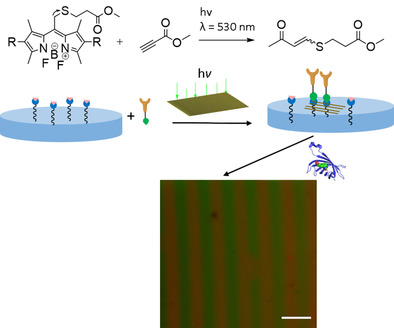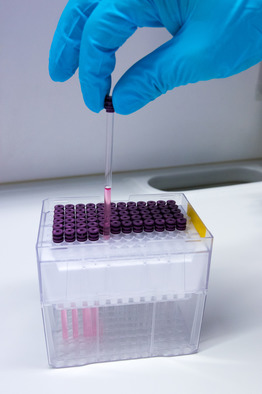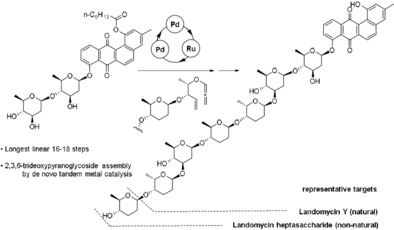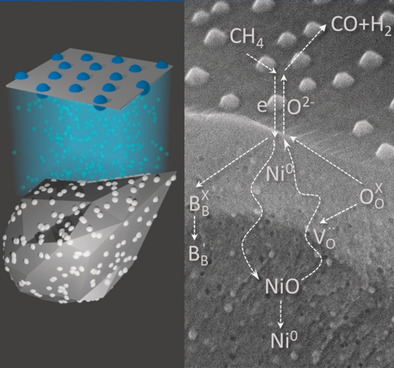Journal list menu
Export Citations
Download PDFs
Cover Pictures
Cover Picture: Facially Dispersed Polyhydride Cu9 and Cu16 Clusters Comprising Apex-Truncated Supertetrahedral and Square-Face-Capped Cuboctahedral Copper Frameworks (Angew. Chem. Int. Ed. 6/2020)
- Page: 2125
- First Published: 13 December 2019
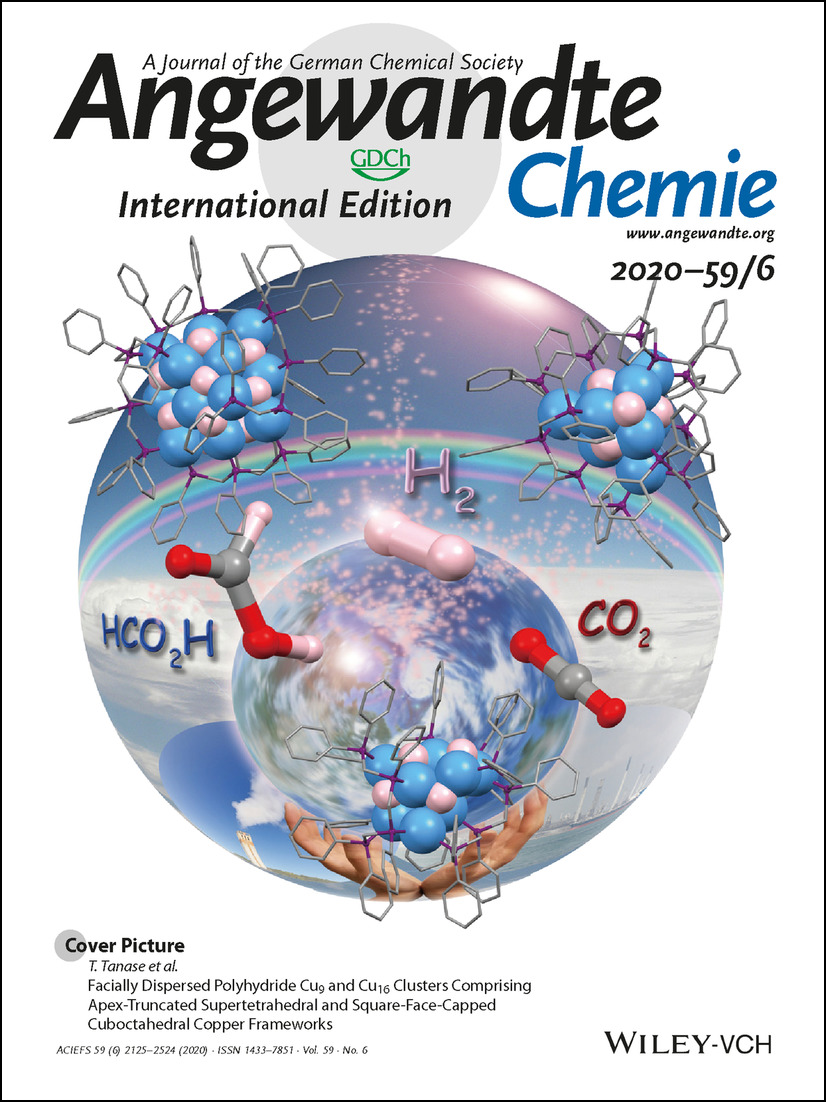
Catalytic hydrogenation of CO2 to formate is promoted by copper hydride clusters. Cage-type copper hydride clusters prepared by using a tetraphosphine ligand, dpmppm, can have apex-truncated supertetrahedral {Cu9H7}2+ and square-face-capped cuboctahedral {Cu16H14}2+ frameworks, or an unsymmetrical {Cu8H6}2+ structure. As reported by T. Tanase and co-workers in their Communication on page 2262, the kinetically trapped {Cu8H6}2+ species promotes catalytic hydrogenation of CO2 to formate in the presence of strong base.
Inside Cover: Construction of Quaternary Carbon Center by Catalytic Asymmetric Alkylation of 3-Arylpiperidin-2-ones Under Phase-Transfer Conditions (Angew. Chem. Int. Ed. 6/2020)
- Page: 2126
- First Published: 19 December 2019
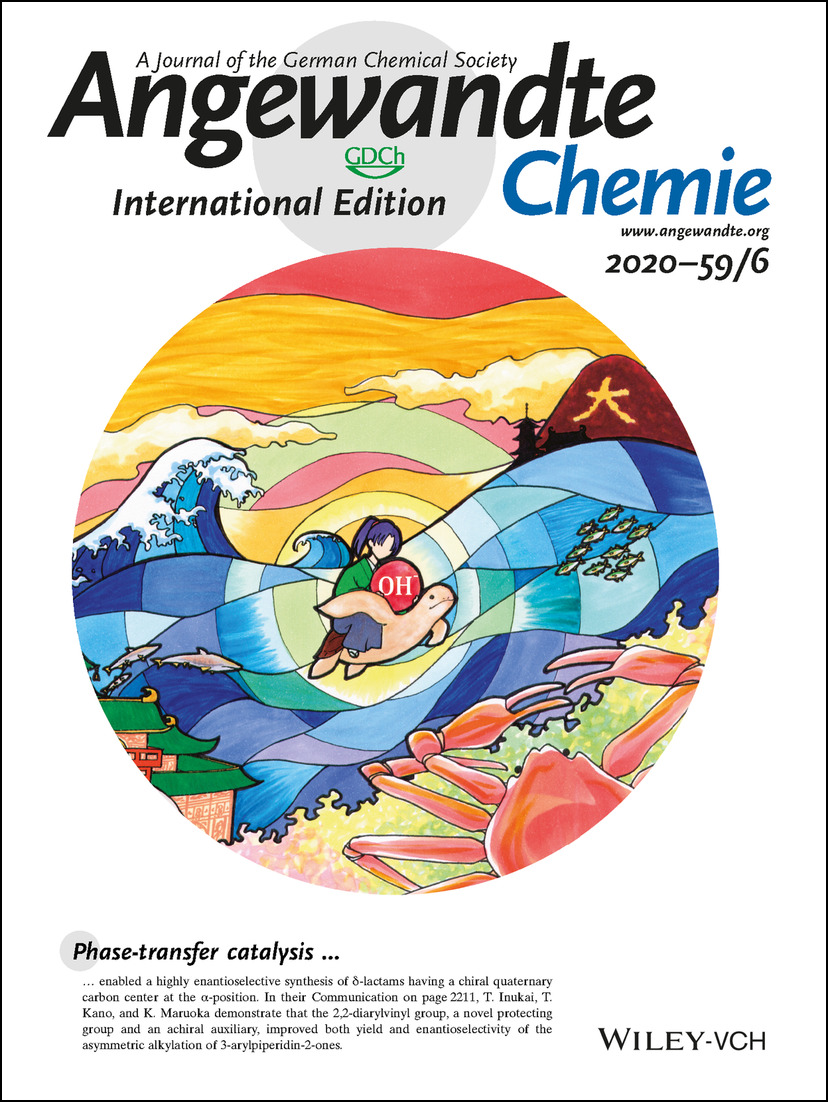
Phase-transfer catalysis enabled a highly enantioselective synthesis of δ-lactams having a chiral quaternary carbon center at the α-position. In their Communication on page 2211, T. Inukai, T. Kano, and K. Maruoka demonstrate that the 2,2-diarylvinyl group, a novel protecting group and an achiral auxiliary, improved both yield and enantioselectivity of the asymmetric alkylation of 3-arylpiperidin-2-ones.
Inside Back Cover: Tracking Pathogen Infections by Time-Resolved Chemical Proteomics (Angew. Chem. Int. Ed. 6/2020)
- Page: 2523
- First Published: 27 January 2020
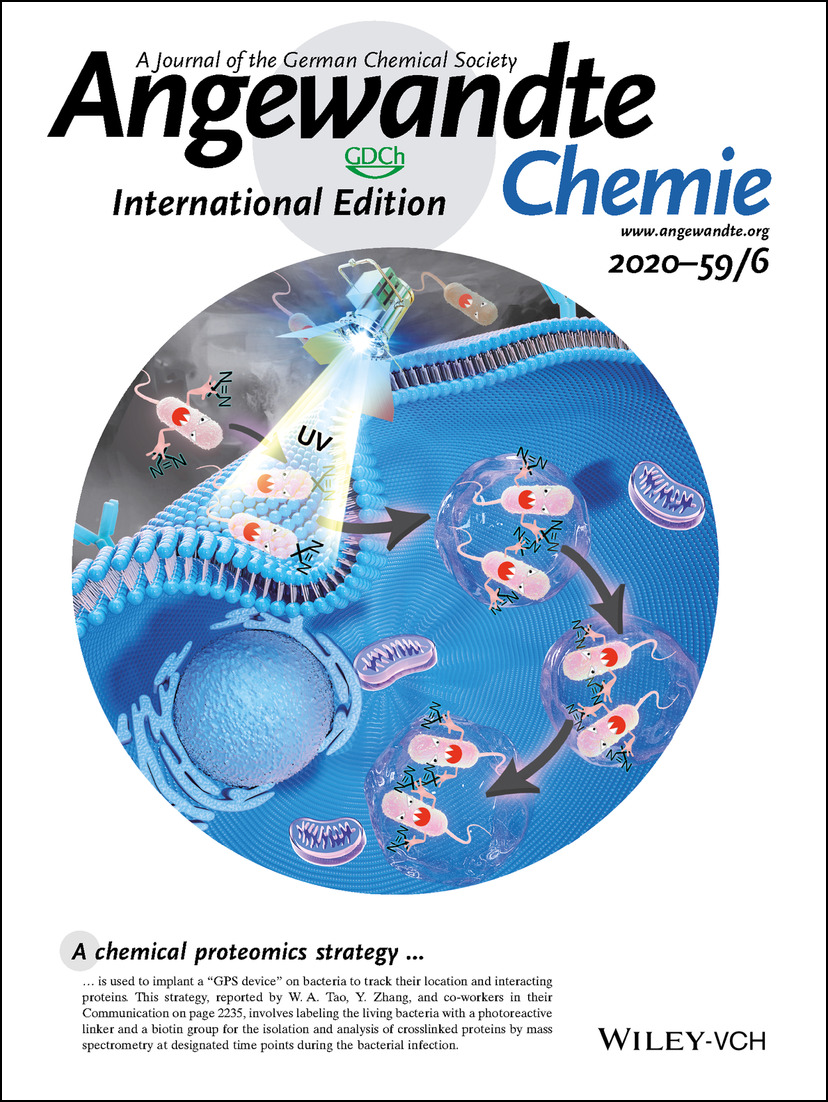
A chemical proteomics strategy is used to implant a “GPS device” on bacteria to track their location and interacting proteins. This strategy, reported by W. A. Tao, Y. Zhang, and co-workers in their Communication on page 2235, involves labeling the living bacteria with a photoreactive linker and a biotin group for the isolation and analysis of crosslinked proteins by mass spectrometry at designated time points during the bacterial infection.
Back Cover: Flexible Total Synthesis of 11-Deoxylandomycins and Their Non-Natural Analogues by Way of Asymmetric Metal Catalysis (Angew. Chem. Int. Ed. 6/2020)
- Page: 2524
- First Published: 27 January 2020
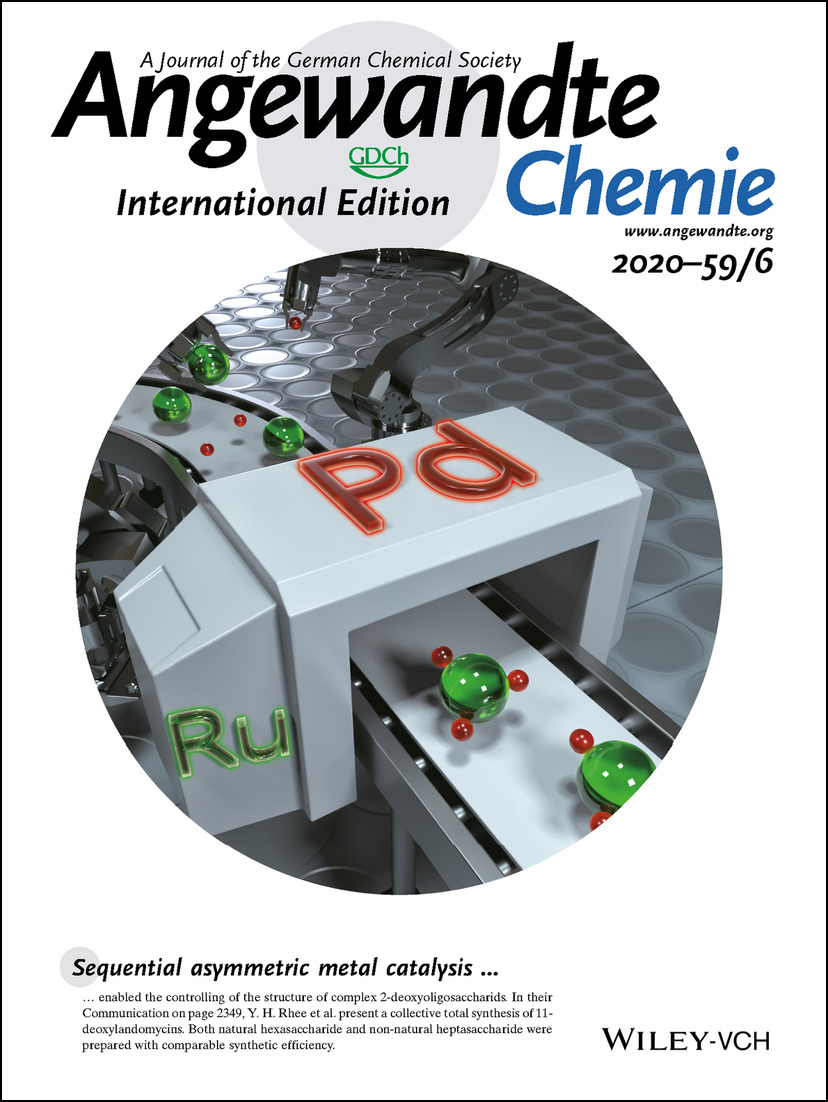
Sequential asymmetric metal catalysis enabled the controlling of the structure of complex 2-deoxyoligosaccharids. In their Communication on page 2349, Y. H. Rhee et al. present a collective total synthesis of 11-deoxylandomycins. Both natural hexasaccharide and non-natural heptasaccharide were prepared with comparable synthetic efficiency.
Frontispiece
Frontispiece: The 3F Library: Fluorinated Fsp3-Rich Fragments for Expeditious 19F NMR Based Screening
- First Published: 27 January 2020
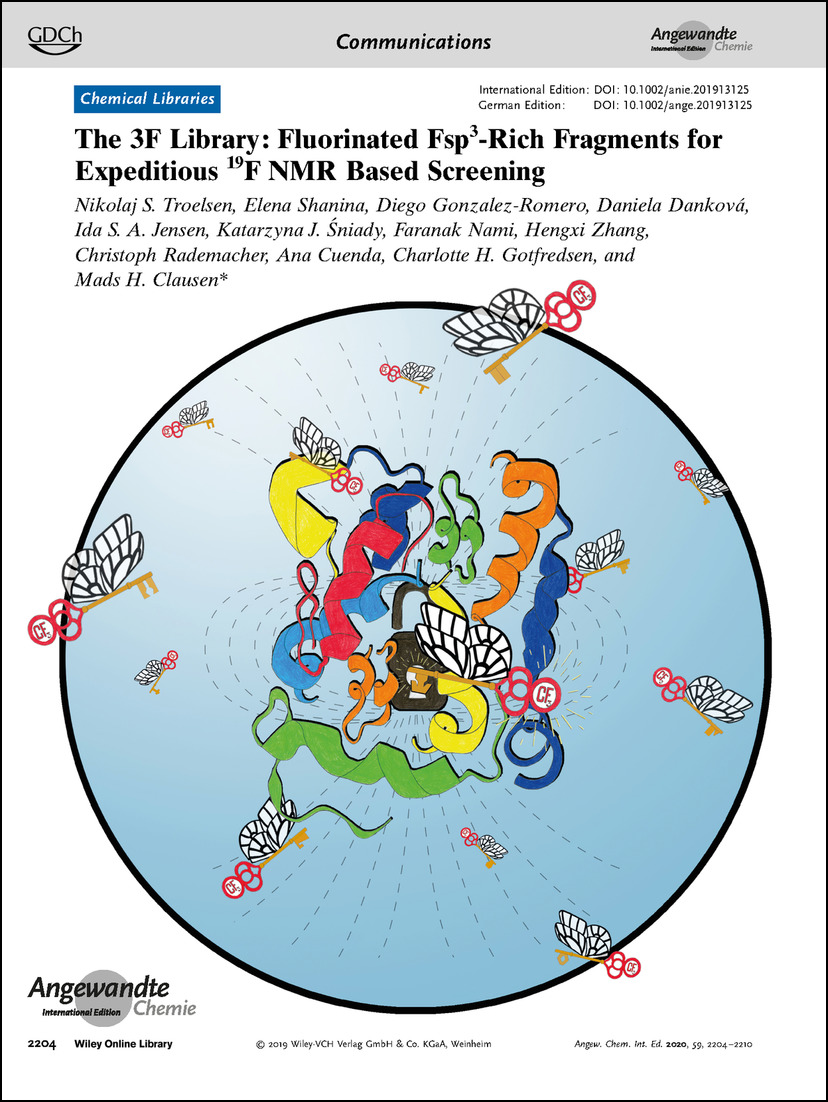
Chemical Libraries In their Communication on page 2204, M. H. Clausen et al. present the design and synthesis of a library of fluorinated fragments to enable efficient screening by 19F NMR spectroscopy during fragment-based drug discovery.
Frontispiece: In-Depth TEM Investigation on Structural Inhomogeneity within a Primary LixNi0.835Co0.15Al0.015O2 Particle: Origin of Capacity Decay during High-Rate Discharge
- First Published: 27 January 2020
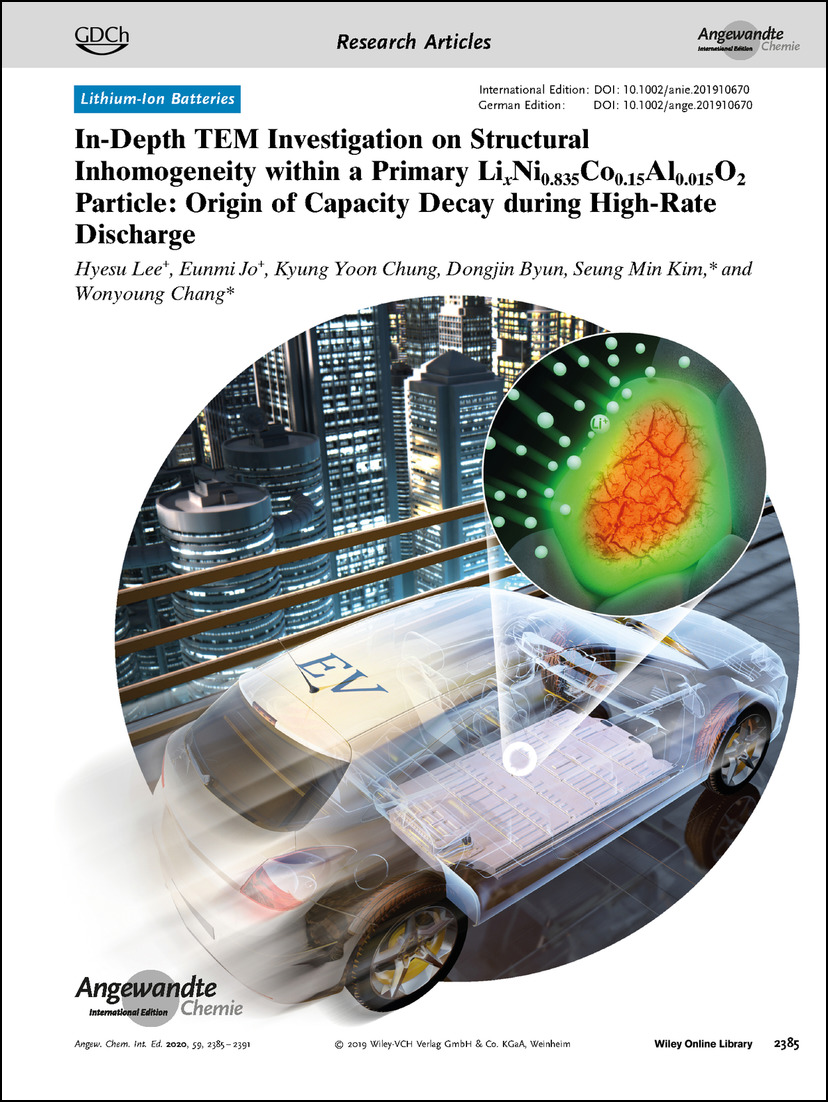
Lithium-Ion Batteries The effect on capacity of structural changes within a cathode material for Li-ion batteries is investigated using TEM by S. M. Kim, W. Chang, and co-workers in their Research Article on page 2385.
Graphical Abstract
Graphical Abstract: Angew. Chem. Int. Ed. 6/2020
- Pages: 2129-2144
- First Published: 27 January 2020
Corrigenda
Corrigendum: Conformational Dynamics of apo-GlnBP Revealed by Experimental and Computational Analysis
- Page: 2144
- First Published: 27 January 2020
Author Profile
News
Bunsen Lecture: R. Winter / Werner Prize: Konrad Tiefenbacher / Ružička Prize: D. Katayev
- Page: 2149
- First Published: 27 January 2020
Essays
Ethical Research
Blocking the Hype-Hypocrisy-Falsification-Fakery Pathway is Needed to Safeguard Science
- Pages: 2150-2154
- First Published: 07 October 2019
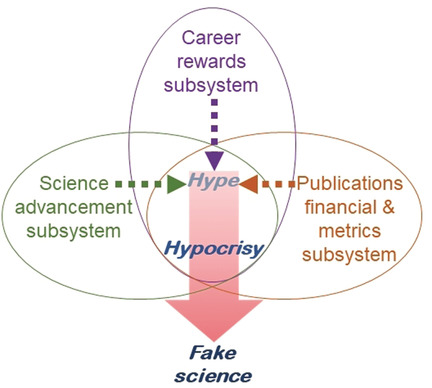
Hype in science is commonplace, compounded by the hypocrisy of those who engage in or tolerate it while disapproving of the consequences. These are first steps along a slippery slope of hype, hypocrisy, data falsification, and dissemination of fake science, encouraged by systemic drivers in the contemporary structure of the science establishment. Collective, concerted intervention is required to discourage entry to this dangerous pathway; chemists must play an active role.
Minireviews
[2.2]Paracyclophanes
Regioselective Functionalization of [2.2]Paracyclophanes: Recent Synthetic Progress and Perspectives
- Pages: 2156-2170
- First Published: 08 July 2019
![Regioselective Functionalization of [2.2]Paracyclophanes: Recent Synthetic Progress and Perspectives](/cms/asset/6e50aa45-4b3e-4c3a-9c71-eca2580d0076/anie201904863-toc-0001-m.jpg)
From synthesis to function: [2.2]Paracyclophane (PCP) is a prevalent scaffold in asymmetric synthesis, π-stacked polymers, energy materials, and functional parylene coatings that finds broad applications in bio- and materials science. This Minireview highlights the enormous progress made in PCP chemistry that has enabled the fine-tuning of its structural and functional properties.
Nanoparticles
Reshaping of Metal Nanoparticles Under Reaction Conditions
- Pages: 2171-2180
- First Published: 12 July 2019
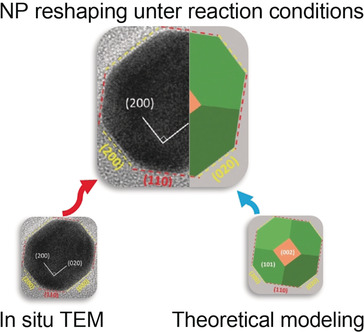
Getting into shape: This Minireview gives a summary of the latest progress in characterizing and modeling the equilibrium shape of metal nanoparticles (NPs) in reactive environments through the combination of state-of-the-art in situ environmental transmission electron microscopy (ETEM) experiments and the multiscale structure reconstruction (MSR) model.
Reviews
Nitrification
The Chemistry, Biology, and Modulation of Ammonium Nitrification in Soil
- Pages: 2182-2202
- First Published: 22 May 2019

The low efficiency of ammonium fertilizers used in agriculture contributes to significant environmental issues and economic losses. This Review discusses the chemistry and enzymatic mechanisms of microbial nitrification in the soil and highlights phytochemicals which can act as nitrification inhibitors, thus providing opportunities to stabilize ammonium in farm soils to increase the efficiency of nitrogen use.
Communications
Chemical Libraries
The 3F Library: Fluorinated Fsp3-Rich Fragments for Expeditious 19F NMR Based Screening
- Pages: 2204-2210
- First Published: 14 November 2019
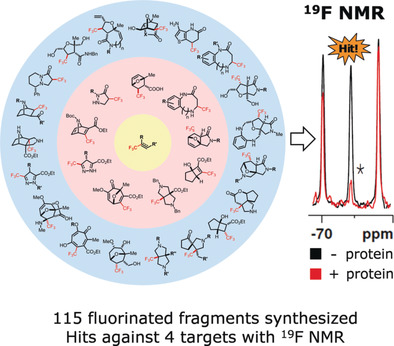
Taking the lead: A large library of fluorinated fragments was designed and synthesized to address the need for better sampling of chemical space and easier screening workflows. The incorporation of fluorine enabled efficient screening by 19F NMR spectroscopy, which was demonstrated for screening against four disease-relevant targets, providing a series of starting points for drug discovery.
Organocatalysis
Construction of Quaternary Carbon Center by Catalytic Asymmetric Alkylation of 3-Arylpiperidin-2-ones Under Phase-Transfer Conditions
- Pages: 2211-2214
- First Published: 26 November 2019

In phase: δ-Lactams having a chiral quaternary carbon center were synthesized through an asymmetric alkylation of 3-arylpiperidin-2-ones under phase-transfer conditions. A 2,2-diarylvinyl group on the δ-lactam nitrogen atom plays a crucial role as a novel protecting group and an achiral auxiliary for improving both yield and enantioselectivity of the reaction.
Metal–Organic Frameworks
Imparting Multifunctionality by Utilizing Biporosity in a Zirconium-Based Metal–Organic Framework
- Pages: 2215-2219
- First Published: 23 October 2019
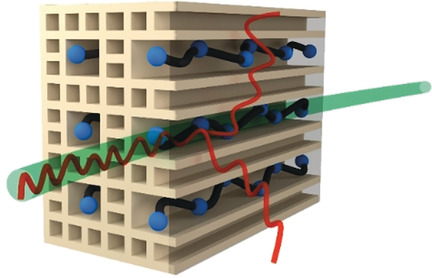
The biporous nature of UiO-66 is utilized to incorporate conducting polymer moieties into the voids of the metal–organic framework. In this way the resulting nanocomposites display significant porosity and simultaneous million-fold enhancement in electrical conductivity along with ultralow thermal conductivity.
Asymmetric Catalysis
Asymmetric Synthesis of a Fused Tricyclic Hydronaphthofuran Scaffold by Desymmetric [2+2+2] Cycloaddition
- Pages: 2220-2224
- First Published: 20 November 2019
![Asymmetric Synthesis of a Fused Tricyclic Hydronaphthofuran Scaffold by Desymmetric [2+2+2] Cycloaddition](/cms/asset/0cd70b3c-8c8f-4eb4-ba20-3e84cf50794a/anie201911071-toc-0001-m.jpg)
A rhodium(I)-BINAP-catalyzed [2+2+2] cycloaddition of enynes with alkynes has been developed. Diverse fused tricyclic hydronaphthofuran scaffolds with three consecutive stereogenic centers were constructed in one step from easily available materials with excellent chemo-, regio-, diastereo-, and enantioselectivity. Notable features of these reactions include 100 % atom economy, very broad scope, and mild reaction conditions.
Microfluidics
Controllable Synthesis of Multicompartmental Particles Using 3D Microfluidics
- Pages: 2225-2229
- First Published: 07 November 2019

A microfluidic device, consisting of a microfluidic chip and capillary, was developed to produce multicompartmental particles. By adjusting various parameters of the device, the size of the particles and the number of different compartments within the particle could be varied. These were used to encapsulate magnetic beads, fluorescent nanoparticles, and cells.
Aromaticity
Porphyrin/Quinoidal-Bithiophene-Based Macrocycles and Their Dications: Template-Free Synthesis and Global Aromaticity
- Pages: 2230-2234
- First Published: 06 November 2019

Adaptable porphyrin-based macrocycles: Macrocycles containing aromatic porphyrin and quinoidal bithiophene units were synthesized by a template-free method. The molecules adopted a distorted conformation with local aromaticity in the neutral state, but a more planar geometry with global aromaticity in the dication state (see picture).
Chemical Proteomics
Tracking Pathogen Infections by Time-Resolved Chemical Proteomics
- Pages: 2235-2240
- First Published: 26 November 2019
2D Materials
A Factorial Design Approach for Hydrothermal Synthesis of Phase-Pure AgInO2: A Parametric Optimization Study
- Pages: 2241-2245
- First Published: 03 December 2019
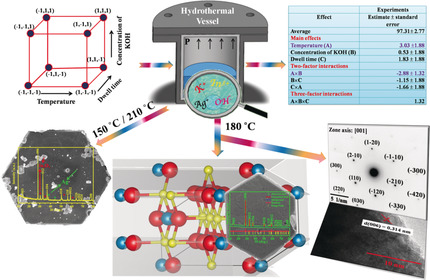
Design! The factorial design approach was adopted for synthesizing phase-pure AgInO2 using a hydrothermal route. Silver nitrate and indium nitrate with KOH as a mineralizer promote the formation of AgInO2 in the form of hexagonal nanoplates. The optimum condition of 180 °C and 4 m KOH was the crucial combination to obtain the pure phase.
Palladium Catalysis
Asymmetric Wacker-Type Oxyallenylation and Azaallenylation of Cyclic Alkenes
- Pages: 2246-2250
- First Published: 06 November 2019
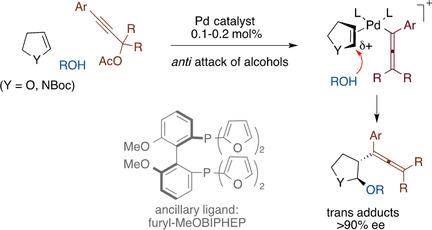
Wacker anti attack: Asymmetric anti attack of weak nucleophiles on cyclic alkenes proceeded without the aid of directing groups or tethering of the alkene to the palladium center. The three-component oxyallenylation reaction (see scheme) gave trans adducts exclusively with excellent enantioselectivity and is applicable to a wide range of oxygen nucleophiles and some electron-poor aryl amines.
Supramolecular Chemistry
Separation of Bromoalkanes Isomers by Nonporous Adaptive Crystals of Leaning Pillar[6]arene
- Pages: 2251-2255
- First Published: 25 November 2019
Organic Chemistry
Rapid Syntheses of (−)-FR901483 and (+)-TAN1251C Enabled by Complexity-Generating Photocatalytic Olefin Hydroaminoalkylation
- Pages: 2256-2261
- First Published: 06 November 2019

The speed of light: The syntheses of polycyclic alkaloids (−)-FR901483 and (+)-TAN1251C through a common spirolactam intermediate are reported. Photocatalytic olefin hydroaminoalkylation brings together three readily available building blocks to produce the majority of the carbon framework in one step, leading to concise total syntheses.
Copper Hydride Clusters
Facially Dispersed Polyhydride Cu9 and Cu16 Clusters Comprising Apex-Truncated Supertetrahedral and Square-Face-Capped Cuboctahedral Copper Frameworks
- Pages: 2262-2267
- First Published: 13 November 2019
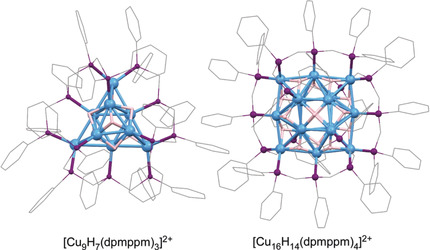
Let's Cu hydrogenate: Cage-type copper hydride clusters with the tetraphosphine ligand, dpmppm, have an unprecedented apex-truncated supertetrahedral {Cu9H7}2+ and square-face-capped cuboctahedral {Cu16H14}2+ framework. An unsymmetric {Cu8H6}2+ cluster promotes the catalytic hydrogenation of CO2 to formate in the presence of strong base.
Porous Liquids
Transforming Porous Organic Cages into Porous Ionic Liquids via a Supramolecular Complexation Strategy
- Pages: 2268-2272
- First Published: 28 November 2019
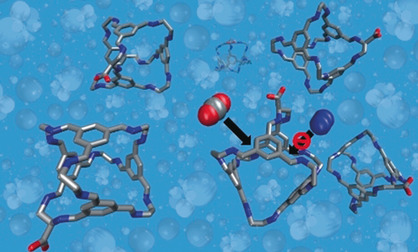
A Type I porous liquid is synthesized by transforming porous organic cages into porous ionic liquids via a supramolecular complexation strategy. Simple physical mixing of 18-crown-6 with an anionic porous organic cage affords a porous ionic liquid with anionic porous organic cages as the anionic parts and 18-crown-6/potassium ion complexes as the cationic parts.
Zinc-Ion Batteries
A Deep-Cycle Aqueous Zinc-Ion Battery Containing an Oxygen-Deficient Vanadium Oxide Cathode
- Pages: 2273-2278
- First Published: 19 November 2019
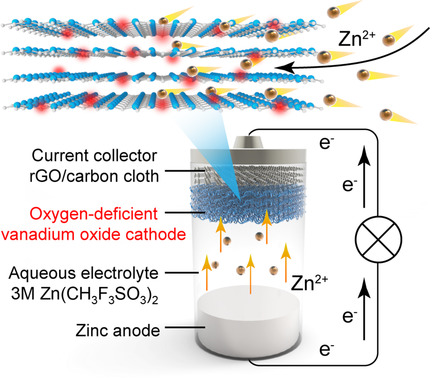
A high-performance cathode for use in deep-cycle aqueous zinc-ion batteries was created by extracting oxygen from vanadium oxide lattices. The mobility of Zn2+ is facilitated and capacity and reversibility of the battery thereby improved. The cathode achieves a stability of 200 cycles with a high capacity of 400 mAh g−1 and a utilization efficiency of 95 %, and a long-term stability of 2 000 cycles at a utilization of 67 %. Key: graphene oxide (GO).
Imaging Agents
Multilamellar LipoCEST Agents Obtained from Osmotic Shrinkage of Paramagnetically Loaded Giant Unilamellar Vescicles (GUVs)
- Pages: 2279-2283
- First Published: 05 December 2019
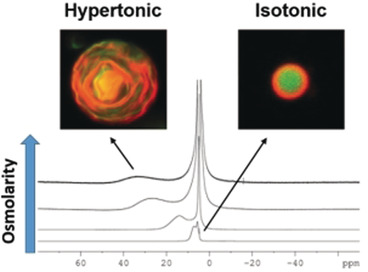
GiantCEST: Giant unilamellar vesicles (GUVs) loaded with LnIII complexes can be used as chemical exchange saturation transfer (CEST) MRI contrast agents. Upon osmotic shrinkage, GUVs yielded a saturation-transfer effect three orders of magnitude higher than small unilamellar vesicles (SUVs). Confocal microscopy showed that the shrinkage of GUVs resulted in multilamellar particles whereas the shrinkage of SUVs yields asymmetrical, discoidal particles.
Photochemistry
Additive-Free Green Light-Induced Ligation Using BODIPY Triggers
- Pages: 2284-2288
- First Published: 25 November 2019
Heterogeneous Catalysis
Catalytic Production of Alanine from Waste Glycerol
- Pages: 2289-2293
- First Published: 26 November 2019
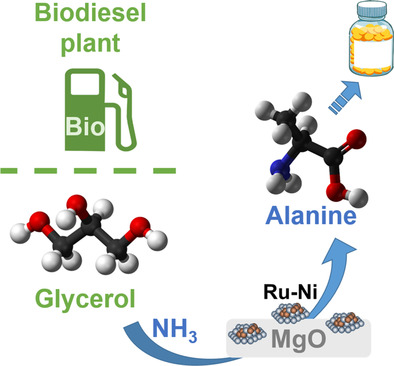
Direct conversion: 43 % alanine was achieved from crude glycerol over a Ru1Ni7/MgO catalyst. Ni-doped Ru remarkably promoted lactic acid amination, a key step in the reaction. The catalytic route creates new opportunities for glycerol utilization and enriches the substrate scope of renewable feedstock to access value-added amino acids.
Electrochemical Sensors
A Solid-State Reference Electrode Based on a Self-Referencing Pulstrode
- Pages: 2294-2298
- First Published: 12 November 2019
Uranium Chemistry
Isolation of a Perfectly Linear Uranium(II) Metallocene
- Pages: 2299-2303
- First Published: 11 November 2019
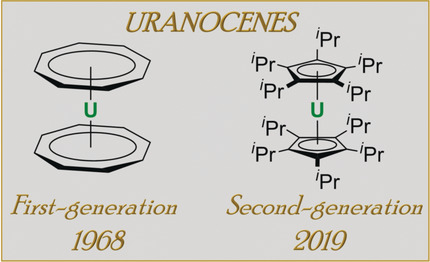
A new generation: Reduction of the uranium(III) metallocene [(η5-C5iPr5)2UI] with potassium graphite produces the “second-generation” uranocene [(η5-C5iPr5)2U], which contains uranium in the formal divalent oxidation state. The geometry of [(η5-C5iPr5)2U] is that of a perfectly linear bis(cyclopentadienyl) sandwich complex.
NMR Spectroscopy
Real-Time NMR Spectroscopy for Studying Metabolism
- Pages: 2304-2308
- First Published: 15 November 2019
Cluster Compounds
Structure Determination of Alkynyl-Protected Gold Nanocluster Au22(tBuC≡C)18 and Its Thermochromic Luminescence
- Pages: 2309-2312
- First Published: 25 November 2019
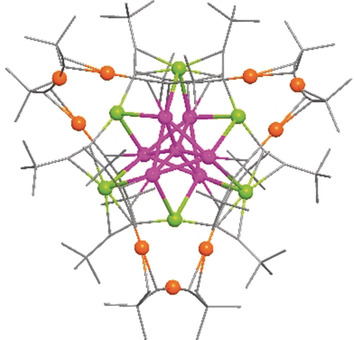
Total determination: The total structure determination of an alkynyl-protected gold nanocluster, Au22(tBuC≡C)18, has been achieved. It consists of a Au13 cuboctahedron kernel and three [Au3(tBuC≡C)4] trimeric staples. The cluster displays strong thermochromic luminescence characterized as thermally activated delayed fluorescence.
Electrocatalysis
Regulating the Spin State of FeIII by Atomically Anchoring on Ultrathin Titanium Dioxide for Efficient Oxygen Evolution Electrocatalysis
- Pages: 2313-2317
- First Published: 19 November 2019
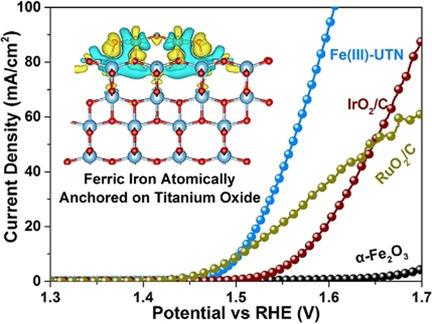
Atomically anchored ferric iron on ultrathin titanium dioxide (Fe-UTN) was synthesized through an adsorption–oxidation strategy. Benefiting from the regulated spin-state of FeIII and improved electronic conductivity, the Fe-UTN exhibits outstanding OER performance over noble metal catalysts (that is, RuO2 and IrO2).
Anode Materials
A Black Phosphorus–Graphite Composite Anode for Li-/Na-/K-Ion Batteries
- Pages: 2318-2322
- First Published: 21 November 2019
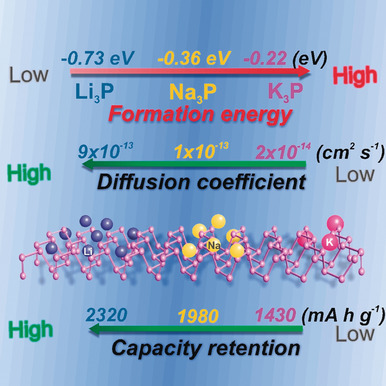
Into the black: The energy-storage properties of black phosphorus are reported for Li/Na/K ion batteries. BP shows the lowest utilization for K+ storage than for Na+ and Li+, which is ascribed to the highest formation energy and the lowest ion diffusion coefficient of the final potassiation product K3P compared with Li3P and Na3P.
Surface Chemistry
Organothiol Monolayer Formation Directly on Muscovite Mica
- Pages: 2323-2327
- First Published: 25 November 2019
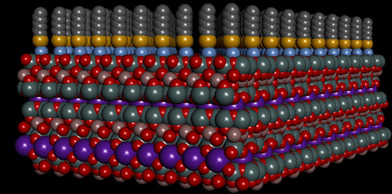
Organothiols with various functional endgroups could be self-assembled into (water) stable and adaptable ultra-flat organothiol monolayers on muscovite mica over homogenous areas as large as 1 cm2. The strength of the mica–organothiol interactions could be tuned by exchanging the potassium surface ions for copper ions.
Asymmetric Catalysis
Nickel-Catalyzed Asymmetric Reductive 1,2-Carboamination of Unactivated Alkenes
- Pages: 2328-2332
- First Published: 22 November 2019

Catalytic enantioselective installation of two unique functional groups into an unactivated alkene can rapidly increase the molecular complexity of a compound. Reported here is a Ni-catalyzed reductive cross-electrophilic 1,2-carboamination of terminal alkenes which permits rapid access to a variety of β-chiral amines with an enantioenriched aryl-substituted quaternary carbon center.
Organocatalysis
Chiral Phosphoric Acid Catalyzed Kinetic Resolution of 2-Amido Benzyl Alcohols: Asymmetric Synthesis of 4H-3,1-Benzoxazines
- Pages: 2333-2337
- First Published: 02 December 2019

A practical approach for the asymmetric synthesis of 4H-3,1-benzoxazines was achieved by the kinetic resolution of 2-amido benzyl alcohols in the presence of a chiral phosphoric acid (CPA). The method demonstrates broad substrate scope and excellent kinetic resolution (with an s factor of up to 94).
Aggregation-Induced Emission
1,1-Diphenylvinylsulfide as a Functional AIEgen Derived from the Aggregation-Caused-Quenching Molecule 1,1-Diphenylethene through Simple Thioetherification
- Pages: 2338-2343
- First Published: 25 November 2019
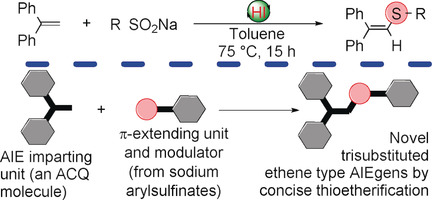
A simple thioetherification between 1,1-diphenylethene as an aggregation-induced emission (AIE)-imparting unit and sodium sulfinates provides a new route for the conversion of compounds with aggregation-caused quenching (ACQ) properties into AIE luminogens. This reaction delivers up to 99 % yield under mild conditions without additional oxidant, and gives access to novel trisubstituted-ethene-type AIEgens with potential for use in sensing applications.
Metal–Metal Bonds
Multiple Bonding Between Group 3 Metals and Fe(CO)3−
- Pages: 2344-2348
- First Published: 26 November 2019
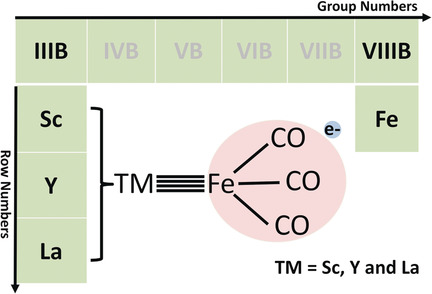
Connect four: Heteronuclear Group 3 metal/iron carbonyl anion complexes ScFe(CO)3−, YFe(CO)3−, and LaFe(CO)3− are prepared in the gas phase and studied by mass-selective infrared (IR) photodissociation spectroscopy as well as quantum-chemical calculations. The results show an unprecedented quadruple bond between the two metal atoms.
Total Synthesis
Flexible Total Synthesis of 11-Deoxylandomycins and Their Non-Natural Analogues by Way of Asymmetric Metal Catalysis
- Pages: 2349-2353
- First Published: 18 November 2019
Syngas Production
Electrosynthesis of a Defective Indium Selenide with 3D Structure on a Substrate for Tunable CO2 Electroreduction to Syngas
- Pages: 2354-2359
- First Published: 04 December 2019
C−H Activation
Rhodium-Catalyzed Remote C(sp3)−H Borylation of Silyl Enol Ethers
- Pages: 2360-2364
- First Published: 04 December 2019
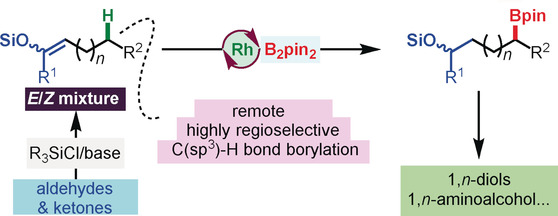
Let's see: A rhodium-catalyzed remote C(sp3)−H borylation of silyl enol ethers (SEEs, E/Z mixtures) by alkene isomerization and hydroboration is reported. This method is compatible with an array of SEEs, including linear and branched SEEs derived from aldehydes and ketones, and provides direct access to a broad range of structurally diverse 1,n-borylethers in excellent regioselectivities and good yields. These compounds are precursors to various valuable chemicals, such as 1,n-diols and aminoalcohols.
Alkynes
Catalytic Selective Dihydrosilylation of Internal Alkynes Enabled by Rare-Earth Ate Complex
- Pages: 2365-2369
- First Published: 02 December 2019
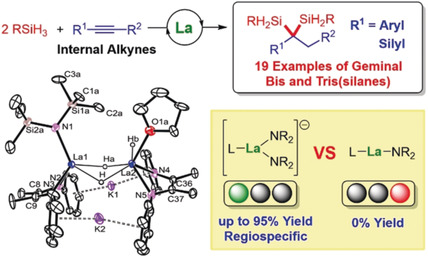
Big metal magic: Dihydrosilylation of aryl- and silyl-substituted internal alkynes is successfully achieved by a lanthanum bis(amido) ate complex to yield geminal bis- and tris(silanes), respectively. The high activity could be attributed to the large lanthanum ion and anionic nature of the catalyst.
Asymmetric Catalysis
Acyclic Branched α-Fluoro Ketones for the Direct Asymmetric Mannich Reaction Leading to the Synthesis of β-Tetrasubstituted β-Fluoro Amines
- Pages: 2370-2374
- First Published: 04 December 2019
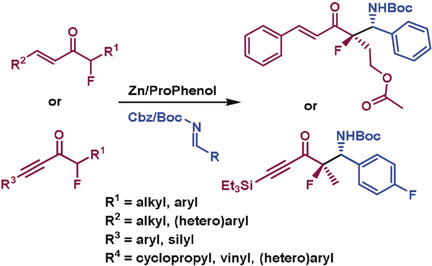
Break the cycle: Simple branched acyclic vinyl and alkynyl fluoro ketones undergo direct asymmetric Mannich reactions with aldimines to form β-fluoro amines bearing tetrasubstituted fluorine stereocenters. The zinc-ProPhenol-catalyzed transformation proceeds in excellent yield, and with high levels of diastereo- (up to <20:1) and enantioselectivity (up to 99 %).
Heterocycle Synthesis
Synthesis of All-Carbon Quaternary Centers by Palladium-Catalyzed Olefin Dicarbofunctionalization
- Pages: 2375-2379
- First Published: 31 October 2019

Shine on you crazy Pd! The dicarbofunctionalization of tri- and tetrasubstituted olefins to form (hetero)cyclic compounds under photoinduced palladium catalysis is described. A broad range of highly decorated olefins tethered to aryl or alkyl bromides were coupled with styrenes or acryl amides. One or two contiguous all-carbon quaternary centers can be formed in a single step with this procedure.
Projection Spectroscopy
Protein NMR Resonance Assignment without Spectral Analysis: 5D SOlid-State Automated Projection SpectroscopY (SO-APSY)
- Pages: 2380-2384
- First Published: 28 October 2019
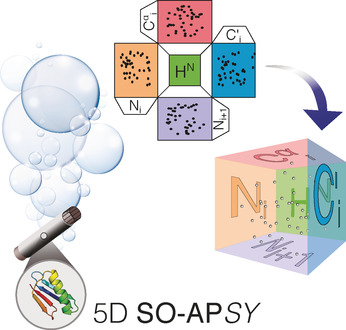
Protein spins in a new dimension: The correlation of five resonance frequencies of nuclear spins within one NMR experiment is now feasible for rapidly rotating protein solids by using projection spectroscopy. The dramatically reduced ambiguity means that the assignment of backbone resonances of proteins can be obtained automatically without the need for manual spectral analysis.
Research Articles
Lithium-Ion Batteries
In-Depth TEM Investigation on Structural Inhomogeneity within a Primary LixNi0.835Co0.15Al0.015O2 Particle: Origin of Capacity Decay during High-Rate Discharge
- Pages: 2385-2391
- First Published: 17 October 2019
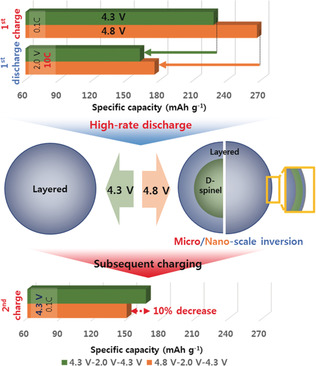
Origin of capacity decay: Structural evolutions within a primary LiNi0.835Co0.15Al0.015O2 (NCA83) particle, as a cathode material for Li-ion batteries, were investigated during various electrochemical processes using TEM. Significant reduction in the electrochemical capacity of NCA83 in the second charge is correlated with the development of nano-scale and micro-scale structural inversions.
Analytical Methods
In Vivo Solid-Phase Microextraction for Sampling of Oxylipins in Brain of Awake, Moving Rats
- Pages: 2392-2398
- First Published: 07 November 2019

Biocompatible in vivo solid-phase microextraction was used to measure 52 eicosanoids and other oxylipins directly in brains of awake moving rats with high temporal and spatial resolution. In vivo profiles of extracellular brain fluid did not reflect oxylipin concentrations in post-mortem tissue and provide a novel tool to elucidate oxylipin pathways and function.
Single-Ion Magnets
An Organic–Inorganic Hybrid Exhibiting Electrical Conduction and Single-Ion Magnetism
- Pages: 2399-2406
- First Published: 29 November 2019
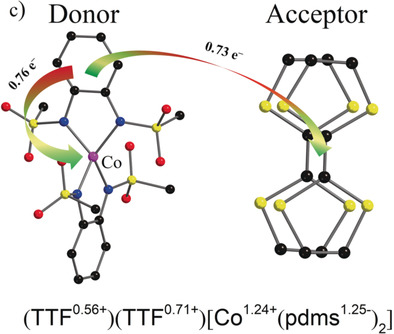
Magnetic personality: Electrocrystallisation of tetrathiafulvalene (TTF) and the magnetic precursor [Co(pdms)2] (H2pdms=1,2-bis(methanesulfonamido)benzene) afforded a 3D conducting single-ion magnet. Multiple charge-transfer interactions between the components produce partial oxidation states for TTF, the Co ion, and the pdms ligand, allowing electrical conductivity at low temperatures.
Molecular Spintronics
Controlling Through-Space and Through-Bond Exchange Pathways in Bis-Cobaltocenes for Molecular Spintronics
- Pages: 2407-2413
- First Published: 09 November 2019

Chemical pinching increases the distance between spin centers. This should result in reduced through-space exchange spin coupling. In naphthalene-bridged biscobaltocenes, the bridge plays a larger role than anticipated, with pinching leading to an increase of spin coupling. This is important for tuning interactions in spin wires for information transfer.
Imaging Agents | Hot Paper
A Class of FeIII Macrocyclic Complexes with Alcohol Donor Groups as Effective T1 MRI Contrast Agents
- Pages: 2414-2419
- First Published: 14 November 2019
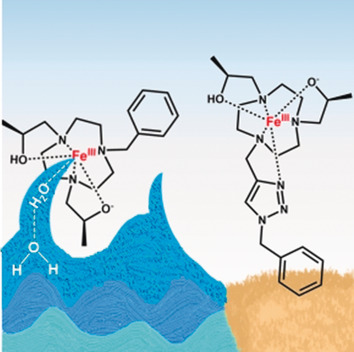
High-spin iron(III) complexes with an open coordination site for solvent interactions are effective T1 MRI contrast agents in phantoms and in live mice. A coordinated water ligand and the deprotonation of a pendant alcohol stabilize the trivalent iron center to produce strong second-sphere water interactions.
Medicinal Chemistry
Chemical Proteomics and Phenotypic Profiling Identifies the Aryl Hydrocarbon Receptor as a Molecular Target of the Utrophin Modulator Ezutromid
- Pages: 2420-2428
- First Published: 22 November 2019
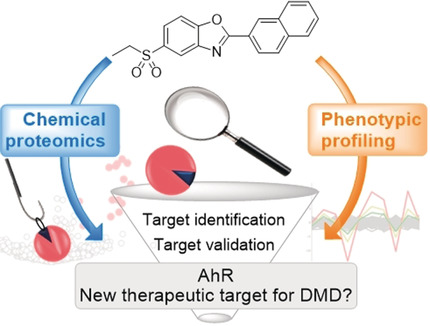
Chemical proteomics and phenotypic profiling illustrate the aryl hydrocarbon receptor (AhR) is a target of ezutromid, the first-in-class utrophin modulator for the treatment of Duchenne muscular dystrophy. Ezutromid binds to AhR with an apparent KD of 50 nm and functions as an AhR antagonist. Other reported AhR antagonists also upregulate utrophin, showing that this pathway, which is currently being explored in other clinical applications, could also be exploited in future DMD therapies.
Drug Discovery
Synthesis and Target Identification of Benzoxepane Derivatives as Potential Anti-Neuroinflammatory Agents for Ischemic Stroke
- Pages: 2429-2439
- First Published: 29 November 2019
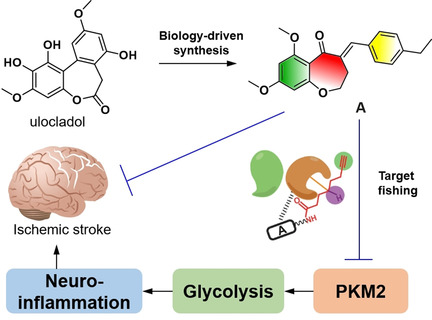
Fishing around: The benzoxepane derivative A was effective in vivo, ameliorating both sickness behavior through anti-inflammation in LPS-induced neuroinflammatory mice model and cerebral ischemic injury through anti-neuroinflammation in rats subjected to transient middle cerebral artery occlusion. Target fishing identified PKM2 as the target protein for A. Furthermore, A exhibited an anti-neuroinflammatory effect in vitro and in vivo by inhibiting PKM2-mediated glycolysis and NLRP3 activation.
Chirality Sensing
Tandem Use of Optical Sensing and Machine Learning for the Determination of Absolute Configuration, Enantiomeric and Diastereomeric Ratios, and Concentration of Chiral Samples
- Pages: 2440-2448
- First Published: 12 November 2019
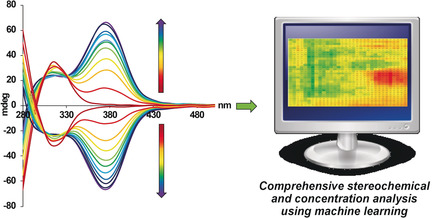
Stereo sensing: The combination of optical sensing and machine learning streamlines the analysis of small amounts of complex stereochemical mixtures of chiral compounds based on a simple mix-and-measure workflow that uses inexpensive chemicals while cumbersome protection chemistry and any type of sample work-up are avoided.
Sodium-Ion Batteries
Development and Investigation of a NASICON-Type High-Voltage Cathode Material for High-Power Sodium-Ion Batteries
- Pages: 2449-2456
- First Published: 27 October 2019
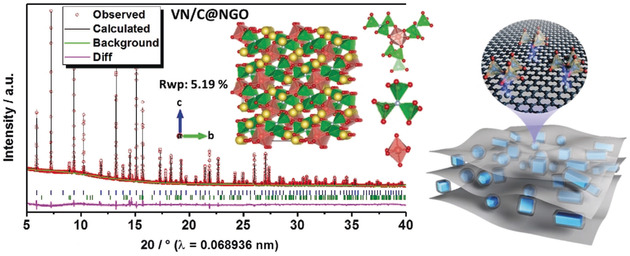
A new NASICON-type high-voltage cathode material of Na3V(PO3)3N was synthesized and its electrochemical performance was improved by carbon matrix decoration. An in-depth investigation of the material was performed through in situ XAS and XRD, and its 3D sodium pathways were clearly identified through DFT calculations.
Hierarchical Porosity
Crystal-Growth-Dominated Fabrication of Metal–Organic Frameworks with Orderly Distributed Hierarchical Porosity
- Pages: 2457-2464
- First Published: 25 November 2019
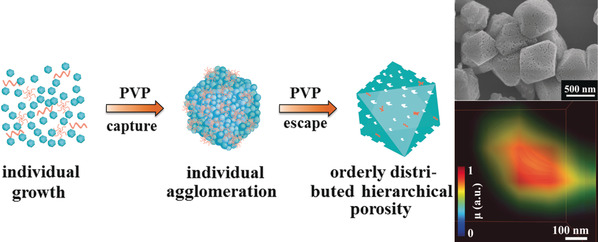
HP-MOFs: A crystal-growth-dominated synthetic strategy is proposed to achieve hierarchically porous metal–organic frameworks. The HP-MOFs have a wide pore size distribution and an orderly distributed porosity in the radial direction. Benefitting from the hierarchical architecture, HP-MOFs exhibit enhanced catalytic efficiency in styrene oxidation.
Nanofibers
A Multi-Wall Sn/SnO2@Carbon Hollow Nanofiber Anode Material for High-Rate and Long-Life Lithium-Ion Batteries
- Pages: 2465-2472
- First Published: 02 December 2019

Multi-wall Sn/SnO2@carbon composite hollow nanofibers were prepared by electrospinning and carbonization reduction. They have solid wire core that is wrapped by a double-wall-tube. This wire-in-double-wall-tube strategy perfectly combines high energy density and high cycling stability. It produces superior electrochemical performance, with a capacity of 986.3 mAh g−1 at 1 A g−1 and 508.2 mAh g−1 at 5 A g−1 after 2000 cycles.
Alkali-Ion Batteries
Construction of Hierarchical Nanotubes Assembled from Ultrathin V3S4@C Nanosheets towards Alkali-Ion Batteries with Ion-Dependent Electrochemical Mechanisms
- Pages: 2473-2482
- First Published: 02 December 2019
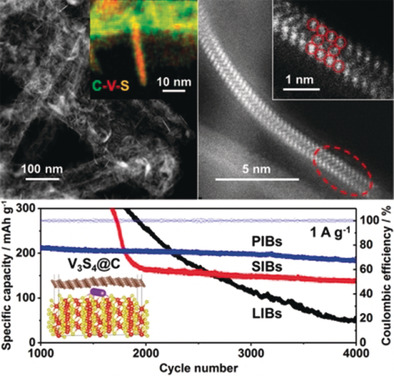
V3S4@C in the shell: Ultrathin core–shell V3S4@C nanosheets assembled into hierarchical nanotubes are synthesized for alkali-ion batteries. Alkali-ion-dependent charge storage mechanisms are put forward with systematic in situ/ex situ structural/physicochemical characterizations and DFT calculations.
Aerogel Catalyst
Heat-Treated Aerogel as a Catalyst for the Oxygen Reduction Reaction
- Pages: 2483-2489
- First Published: 27 November 2019
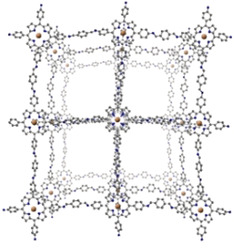
Earth-abundant elements and a built-in support: A novel iron porphyrin aerogel was prepared that has a very high concentration of atomically dispersed catalytic sites (9.7×1020 sites g−1) capable of catalyzing the oxygen reduction reaction in alkaline solution (Eonset=0.92 V vs. RHE, TOF=0.25 e− site−1 s−1 at 0.80 V vs. RHE).
Cell Delivery
Super-Soft and Super-Elastic DNA Robot with Magnetically Driven Navigational Locomotion for Cell Delivery in Confined Space
- Pages: 2490-2495
- First Published: 25 November 2019
Cyanides/Isocyanides
Formation of Short Zn−Zn Bonds Stabilized by Simple Cyanide and Isocyanide Ligands
- Pages: 2496-2504
- First Published: 04 December 2019
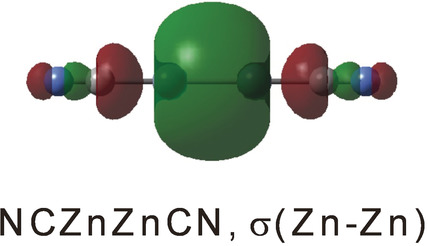
Cyanogen diluted in argon was reacted with laser-ablated Zn atoms to produce the NCZnCN and NCZnZnCN cyanides and their higher energy isocyanide counterparts, as well as ZnNC, which were isolated in excess argon at 4 K. CCSD(T) calculations find a short 2.367 Å Zn−Zn bond in the NCZnZnCN cyanide, and a short 2.347 Å Zn−Zn bond in the higher-energy isocyanide CNZnZnNC.
Surface Chemistry
Real-Time Atomic-Scale Visualization of Reversible Copper Surface Activation during the CO Oxidation Reaction
- Pages: 2505-2509
- First Published: 09 December 2019
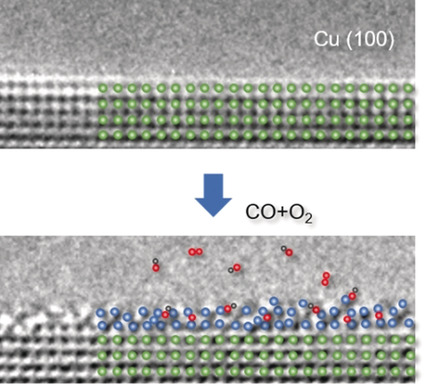
Copper surfer: The atomic-scale surface activation process of copper during CO oxidation was observed through environmental transmission electron microscopy. 2–3 atomic layers of the Cu surface are activated with CO and with the help of O2, which intercalates into Cu lattices. CuOx is also observed and believed to be an active species catalyzing the CO oxidation reaction.
Methane Conversion
Endogenous Nanoparticles Strain Perovskite Host Lattice Providing Oxygen Capacity and Driving Oxygen Exchange and CH4 Conversion to Syngas
- Pages: 2510-2519
- First Published: 05 December 2019





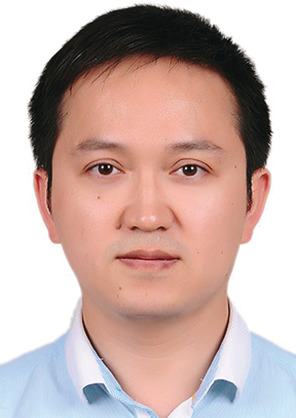

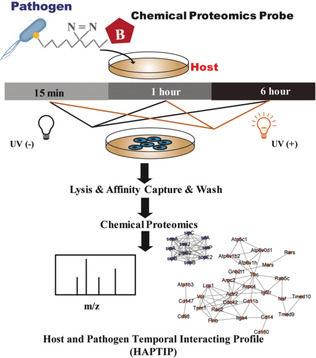
![Separation of Bromoalkanes Isomers by Nonporous Adaptive Crystals of Leaning Pillar[6]arene](/cms/asset/87e26246-d2a4-429b-8aef-8cd4c9e1309b/anie201911965-toc-0001-m.jpg)
